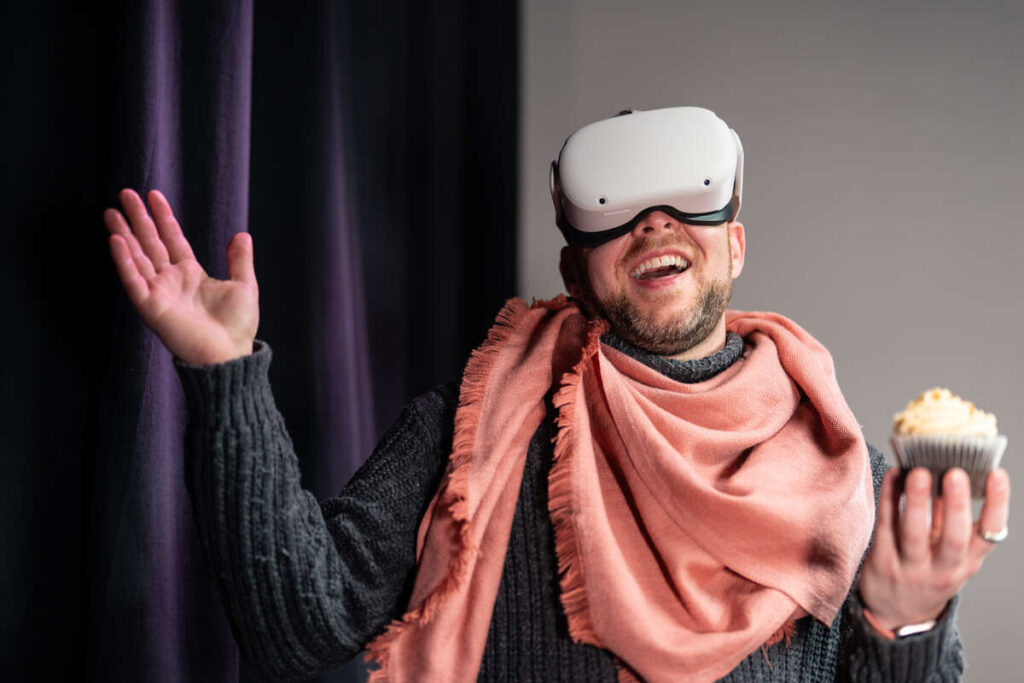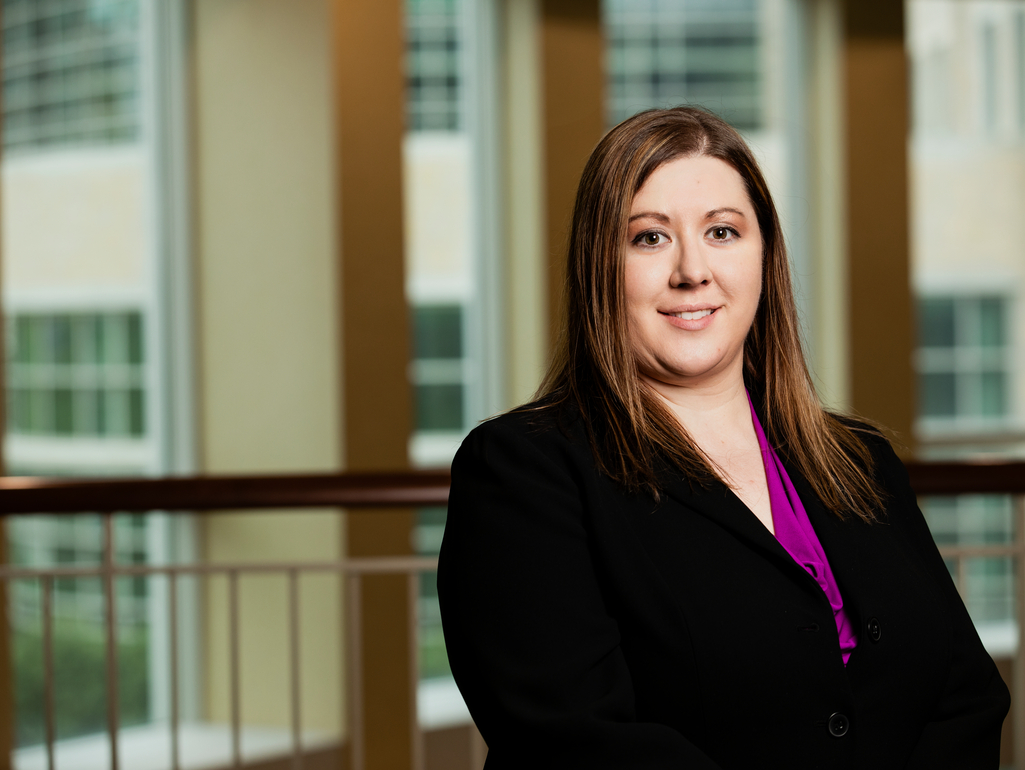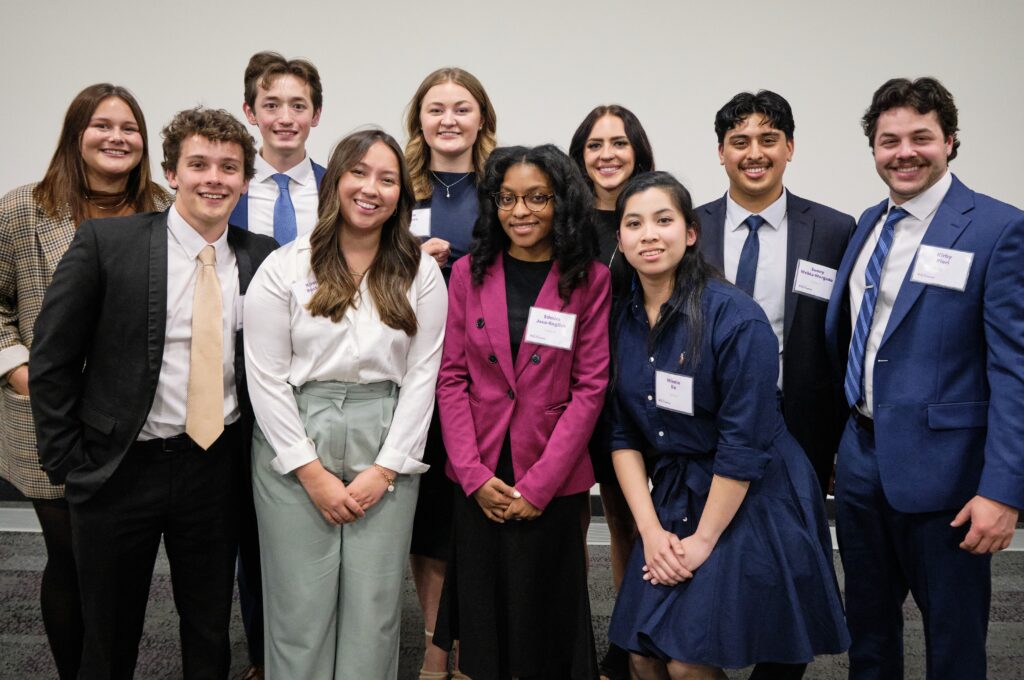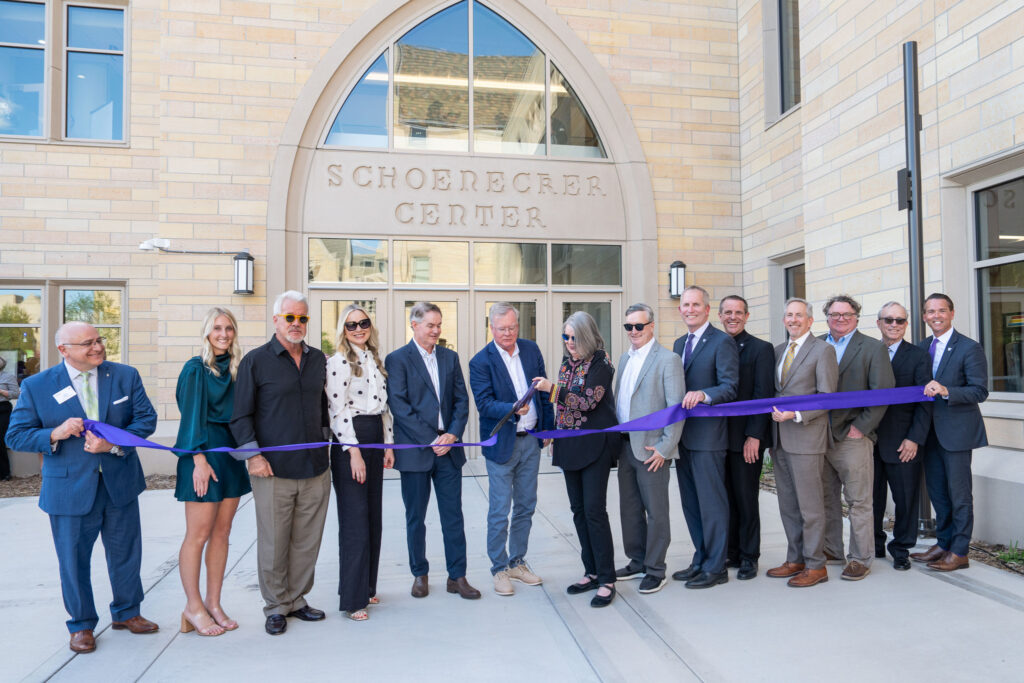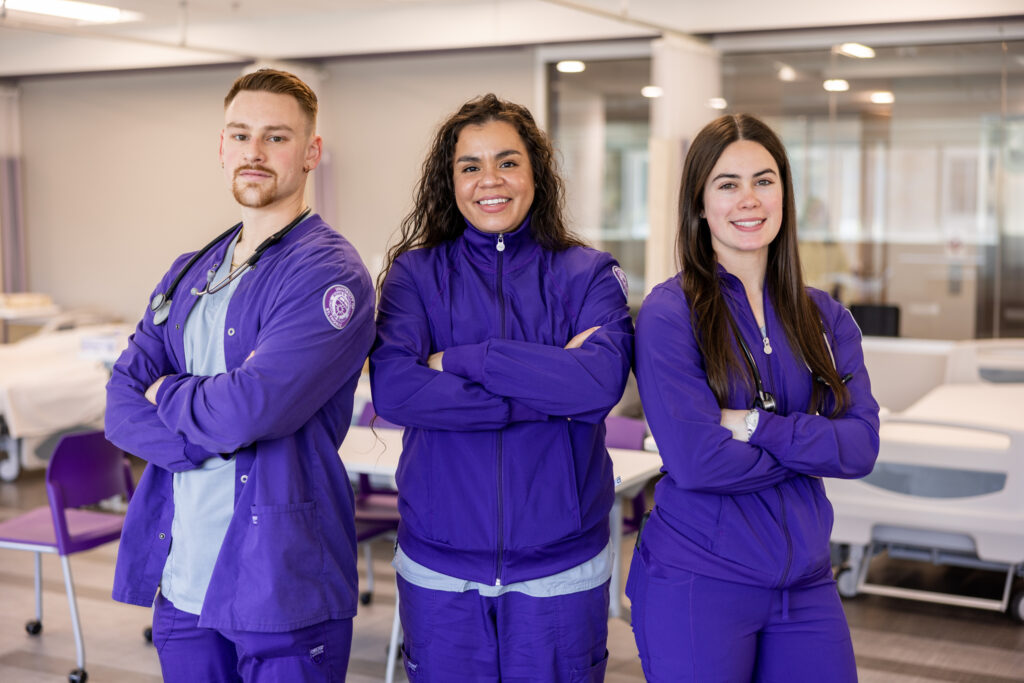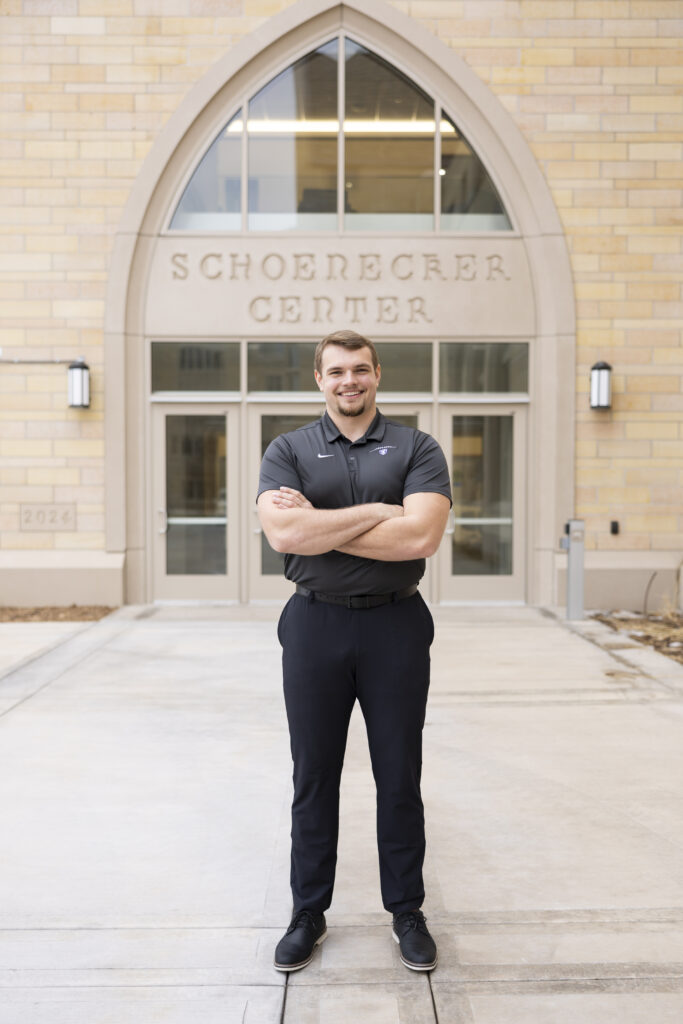The yacht business is “absolutely booming” and undergraduates in an Opus College of Business course at the University of St. Thomas experienced firsthand what it takes to market to the CEOs of yacht manufacturers.
The real-world challenge was a partnership with manufacturing giant 3M for the capstone project in the new Digital Transformation Applications course taught by Dr. Seth Ketron. The course is a part of the college’s Business in a Digital World certificate.
The outline for the customer experience would hand 3M “a ready-made recipe for VR,” Ketron said.
In the last seven weeks of the spring semester, three multidisciplinary teams of students put together different versions of that recipe 3M could consider using to create the virtual reality experience for potential executive customers of its leisure boat and yacht-building products.
With eight different majors represented on the teams, “We had a little bit of an opportunity to challenge each other about the way we were thinking about things,” said Cole Heppner ’24, an entrepreneurship major.
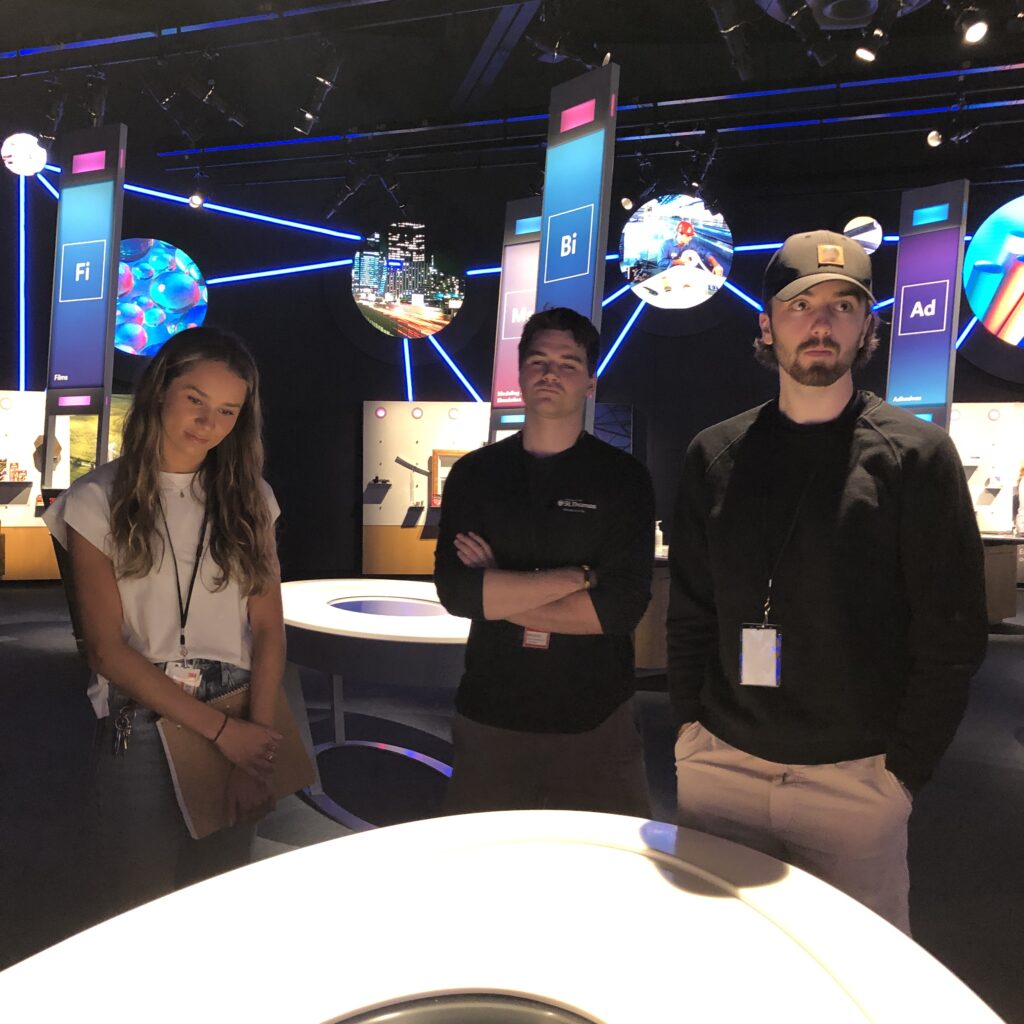
First, the students met (via Zoom) with their 3M clients, Chris Boulton, business development manager of 3M’s Marine business, and Jeannie Sumner, who works on business strategy and digital transformation efforts across the company.
Boulton, who is based in Bassaleg, Wales, had good news and bad news about what he said is a “booming” yacht business. “They’ve got full order books up to 2025; they literally can’t build them fast enough.”
Indeed, the global yacht market was valued at $8.9 billion last year, according to Grand View Research, and is projected to grow to nearly $14 billion by 2030 as high net worth customers invest in leisure and recreational activities. That’s a great opportunity for 3M, which among its thousands of products makes a variety of sealants, adhesives and other products used in leisure boat building and repair.
But the bad news, Boulton said, is that many of these potential customers don’t fully understand what 3M could do for them. A visit to 3M’s Innovation Center in Bracknell, about an hour west of London, could change that – if he could get top high-level executives to make the trip.
Enter VR as an alternative. Compared to a brochure or website, “VR offers a way for companies to showcase what they have to offer in a more realistic environment,” Ketron said. Objects are three-dimensional, you get a sense of scale and proportion, and in some applications, you can interact with things, pick them up, or put things together, he added.
Dr. Seth Ketron, Opus College of BusinessVR offers a way for companies to showcase what they have to offer in a more realistic environment.
Business use of VR and other forms of “extended reality” to enhance the customer experience have surged in recent years, boosted in part because of the COVID-19 pandemic, when many companies had to close their physical doors to the public.
Companies that were able to pivot to VR during this disruption were able to offer some additional benefits, Ketron said, such as showing a buyer an item in a different color, pattern or texture than what was available in a physical store. While VR is not yet an imperative for business, Ketron said, companies like Meta are investing heavily in the space, and it’s only a matter of time before it becomes mainstream.
For students like Camryn Lahr ’24, an operations and supply chain management major who had no previous experience using virtual reality, a visit to the school’s VR lab was revelatory. Being able to try out the technology was “super-awesome,” she said. “It really shows how immersive (VR) can be.”
Beyond the convenience of saving executives the time and need to travel, VR offers other benefits, she said, including the ability to customize the experience, and to meet their client’s goal “to foster a really deep connection with those customers that leaves them with a lasting impression of 3M.”
A tour of a 3M Innovation Center in St. Paul provided students with new insights into the company’s products – and topics for discussion among Lahr’s team members. Lahr was struck by one exhibit highlighting a 3M heat-protective film that is applied to windows. She could put her hand under a window that was under a heat lamp and feel the difference in temperature with and without the 3M film. The team wanted to replicate that kind of aha moment in their VR experience – but how?
This was a bit of a sticking point for Heppner, who was skeptical about the ability of VR to communicate the benefits of 3M’s products. As an entrepreneur, he said, he’s been trained to always ask why: “Is this really the best solution?” He noted that VR “gives you a lot of sight stimuli,” but that sight was probably the least important sense involved in evaluating a product’s performance. He said, “You don’t think, ‘Wow, that sealant looks awesome!’”

In preparation for designing the customer experience in VR, the students also had to complete a customer mapping experience for something they individually purchased online, recording not only what they were doing at each stage, but how they were feeling, in order to help anticipate how their yacht executive might respond at different points of the VR interaction. And they considered strategic questions, like what level of sales lift would make the investment worthwhile.
Ultimately, for their final presentations in May, all three teams designed some version of a virtual walk-through of a customized yacht that highlighted ways 3M Marine products could be used. At least one included comparisons of 3M products with competitors, for example simulating the amount of sun damage or corrosion a surface might sustain over five years. Along with a Meta Quest (formerly branded Oculus) VR headset, Lahr and Heppner’s team’s plan included some samples of products that the customer could touch or interact with, including a small window with a heat-protective tint, echoing their Innovation Center experience.
The teams also considered how to follow up with the customer after the VR experience. One team suggested that an executive who provided a referral to a decision-maker be rewarded with a 3D modeled yacht replicating the one used in their demo as a way to bolster that relationship.
The client, 3M’s Boulton, was thrilled with what the teams came up with. “The level of detail, the level of knowledge about 3M, knowledge about the industry, real knowledge about this VR or AR (augmented reality) space,” he recounted. “I was really impressed. They quickly picked up the endgame.”
Boulton was excited enough about “the amazing content” the teams had put together to forward it to 3M’s CEO, Mike Roman. It’s likely some of the students’ ideas will be shared across the company as its digital transformation progresses.
As for whether Boulton would consider partnering with St. Thomas again on similar projects, Boulton said, “Absolutely.”

